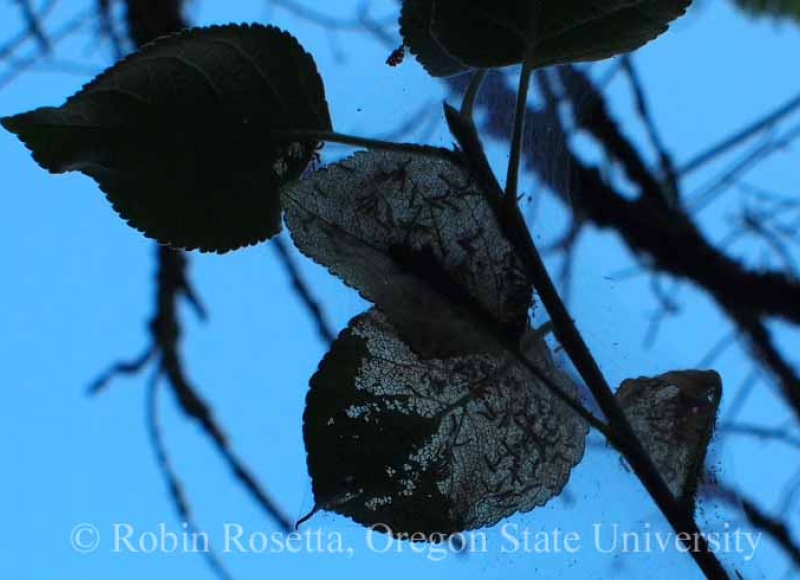One can find the fall webworm, Hyphantria cunea (Drury), in late summer in the Pacific Northwest. They weave a web around themselves and the tree branch on which they dine. They rarely cause significant damage but are considered unsightly.
These Arctiid moths are native and widely distributed. They have a wide host range (85 species in US - Shetlar). Trees commonly infested in Oregon include walnut, fruit trees, and cottonwood, and other hosts include maple, pecan, American elm, hickory, willow, alder, madrone, persimmon and sweetgum (Shetlar, Johnson and Lyon 1991).
They can be distinguished from tent caterpillars in how they enclose themselves in their web along with their food, usually a branch or twig with leaves while tent caterpillars can be found outside their much smaller web. Two races occur in North America and are named for their morphological differences, the blackheaded race and the redheaded race.
Fall webworm overwinters in the pupal stage in the ground, leaf litter, or under bark. Adults emerge in summer (late May-July in Ohio). Eggs hatch in about a week and development of the caterpillar to maturity is about six weeks.
Management options include physical removal of the nests, conservation of natural biological control, use of applied biological control particularly Bt applications; and the use of foliar and systemic registered chemical controls.
Johnson and Lyon (1991) report over 50 species of parasites and 36 species of predators of this pest acting against fall webworm in America.
Sourakov, A. and T. Paris. 2011. Fall Webworm. UF/IFAS Featured Creatures. <10 August 2018>
Douce, K. The Bugwood Network Fact sheet: Fall Webworm
Hyphantria cunea (Drury)
L.L. Hyche, Auburn University. FALL WEBWORM: A Guide to Recognition and Habits in Alabama. Nice pictures at this site.
Johnson, W.T. and H.H. Lyon. 1991. Insects that Feed on Trees and Shrubs. Cornell University Press. Ithaca and London. 560 pp.
Page last modified 8/9/11






